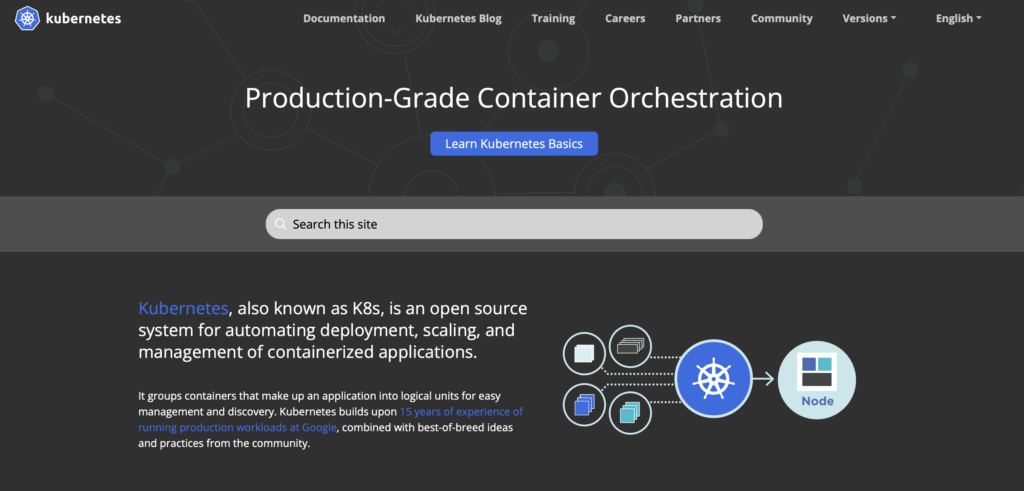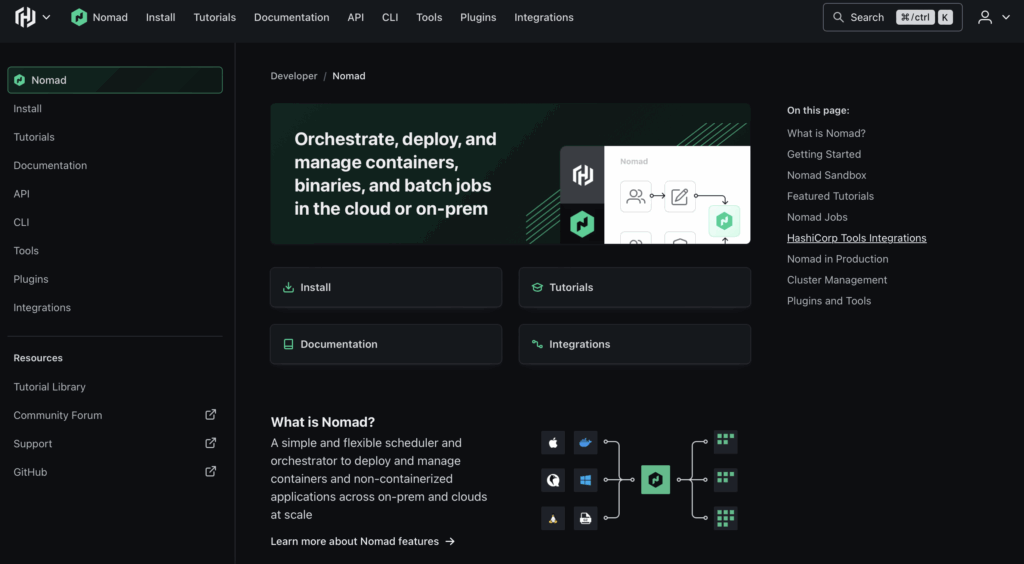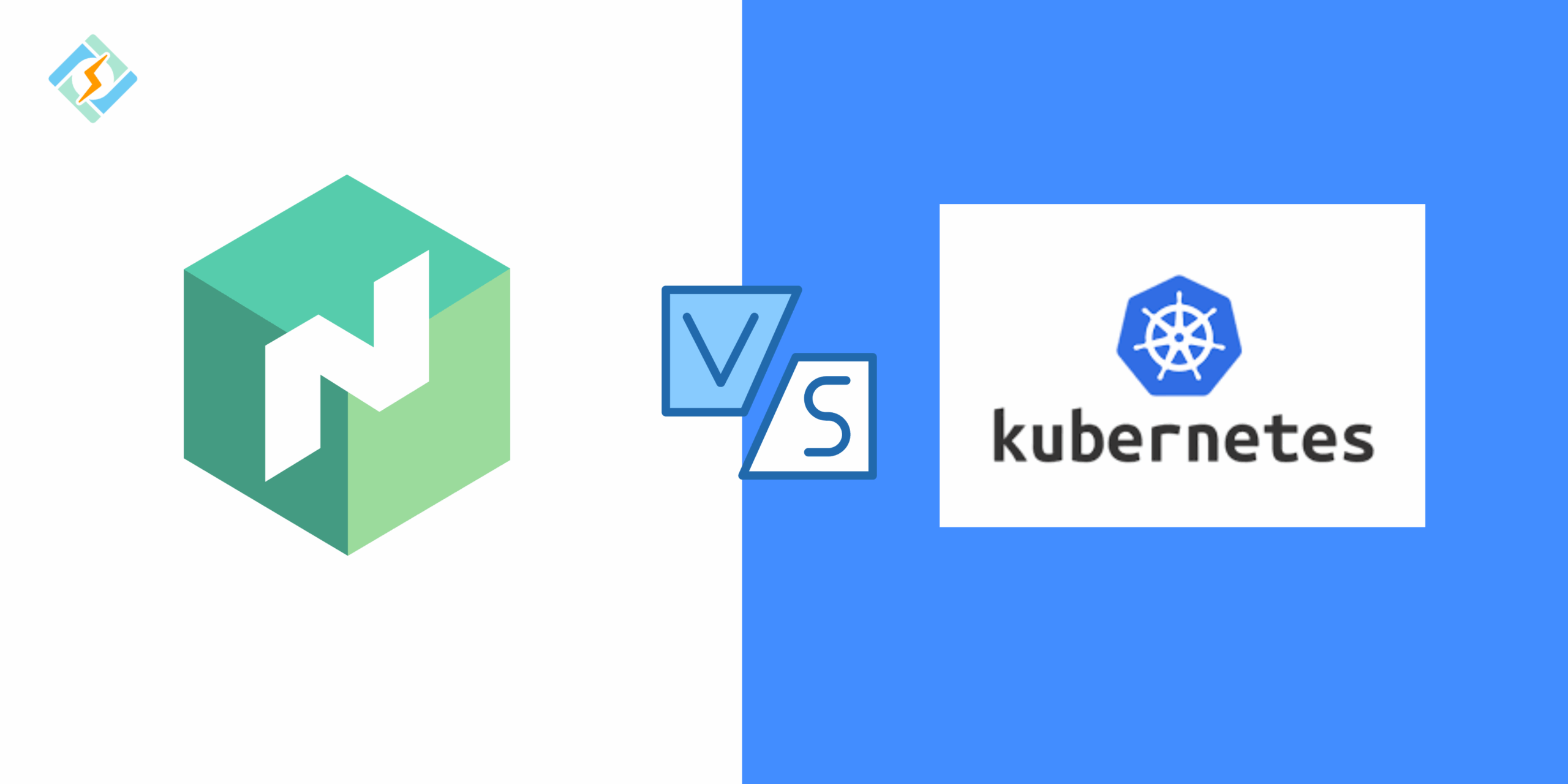In the modern cloud native world, managing containers at scale is a challenge in itself that most organizations face. While Docker does make it easy to run and manage applications, running multiple containers is definitely not easy. It requires powerful orchestration tools, such as Nomad or Kubernetes.
Both platforms help with automated deployment, scaling, and management of containerized applications, but with different approaches. Kubernetes is definitely the more widely used tool with a rich ecosystem, while HashiCorp’s Nomad is known more for its simplicity and flexibility.
In this guide, we will compare the likes of HashiCorp’s Nomad vs Kubernetes and identify the best tool for your needs.
What is Kubernetes?

Kubernetes is an open source container platform that helps automate deployment, scaling, and management of containerized applications. By managing node clusters, Kubernetes ensures that the application runs efficiently across different development environments but in a uniform manner.
It manages tasks such as load balancing, self-healing, and rolling updates. The declarative approach allows the developers to define application state.
Key features:
Get exclusive access to all things tech-savvy, and be the first to receive
the latest updates directly in your inbox.
- Automatic scaling and load balancing
- Self-healing of failed containers
- Rolling updates and rollbacks
- Declarative configuration using YAML manifests
- Rich ecosystem with tools for monitoring, networking, and storage
When to Choose Kubernetes?
Kubernetes is the clear cut choice when you are dealing with:
- Complex, large scale applications that deal with multiple microservices.
- You need high availability across clusters.
- Advanced orchestration features, such as auto-scaling, canary deployments, or service meshes.
- You want to leverage a large ecosystem of plugins.
- Your team has expertise in container orchestration.
What is Nomad?

HashiCorp’s Nomad is a super lightweight, flexible, and easy to use container orchestration platform. Unlike Kubernetes, Nomad does not only handle containerized applications, but also traditional applications, batch jobs, and virtualized workloads.
Key features:
- Single binary, simple architecture
- Multi-datacenter and multi-cloud support
- Supports containers, virtual machines, and standalone executables
- Integrated with HashiCorp tools like Consul (service discovery) and Vault (secrets management)
When to Choose Nomad
Nomad is ideally a good choice when;
- You need a simple and lightweight platform without managing complex clusters.
- Your workloads are a mix of containers, VMs, or legacy applications.
- Your team prefers the HashiCorp’s ecosystem.
- You need fast deployment with limited resources.
Nomad vs Kubernetes: Key Differences
Both HashCorp’s Nomad Vs Kubernetes are pretty popular container orchestration tools, but they approach workload management differently. Understanding these differences allow you to choose the right tool for your use case.
Architecture
Kubernetes follows a more master-worker approach with multiple different components like the API server, scheduler, and state storage. The complexity depends on advanced orchestration but requires careful setup and management.
Nomad on the other hand uses a simpler, single binary approach with a client server model. The Nomad server handles scheduling and coordination while the clients run on workloads. It is lightweight, which results in reduced overhead.
Deployment and Configuration
Kubernetes deployments are defined using the YAML files or Helm charts. The configurations include multiple components, networks, and storage considerations.

Nomad uses HashiCorp Configuration language (HCL) to define the jobs. Deployment is pretty simple with fewer moving parts, which makes it easy to run workloads.
Learning Curve and Ease of Use
Kubernetes has a pretty steep learning curve due to the extensive features and ecosystem. Teams need to be pretty spot on with the clusters, networking, and controllers to manage effectively.
Nomad is much simpler and more intuitive for smaller teams who are already familiar with HashiCorp tools. Learning HCL is also pretty simple.
Resource Management
Kubernetes is much more fine-grained for resource allocation and robust allocation. It ensures that the Kubernetes workloads get the right resources while balancing cluster utilization.
Nomad also provides efficient scheduling and resource management but with fewer advanced features.
Ecosystem and Integrations
Kubernetes has a large ecosystem with thousands of integrations for monitoring, logging, networking, and service meshes with tools like Helm, Prometheus, and more.
Nomad has a smaller ecosystem that integrates seamlessly with HashiCorp tools like Consul, Vault, and Terraform.
Community Support
Kubernetes has a massive global community, active forums, regular conferences, and support combined with tutorials, guides, and more. Also an excellent Reddit community.
Nomad has a smaller community but more niche specific.
Related Article: CDK vs Terraform: A Detailed Comparison For Infrastructure Automation
Nomad Vs Kubernetes Together: Can They Coexist?
They actually could, but it largely depends on your organizational needs. Some teams use Nomad for simpler workloads, others need kubernetes for complex microservice support. If your organization needs the best of both worlds, you could always employ a combination of both.
However, running both can be expensive due to operational overheads and could require more resources. Coexistence works best when workloads are clearly separated and the team has the expertise to manage both platforms.
Pros & Cons of Using Nomad Vs Kubernetes
| Nomad: Pros and Cons | ||
| Aspect | Pros | Cons |
| Simplicity | Lightweight and easy to deploy | Fewer advanced orchestration features |
| Workload Types | Supports containers, VMs, and batch jobs | Less native support for advanced container orchestration |
| Ecosystem & Integrations | Seamless integration with HashiCorp tools | Smaller ecosystem |
| Scaling & Resource Management | Efficient scheduling for small/mid workloads | Limited auto-scaling capabilities |
| Community Support | Focused, niche community | Fewer tutorials and third-party resources |
| Operational Overhead | Low | Limited enterprise features out-of-the-box |
| Kubernetes: Pros and Cons | ||
| Aspect | Pros | Cons |
| Simplicity | Feature-rich for complex setups | Steep learning curve, complex setup |
| Workload Types | Optimized for containerized microservices | Mainly container-focused |
| Ecosystem & Integrations | Large ecosystem with thousands of integrations | Can be overwhelming to choose the right tools |
| Scaling & Resource Management | Advanced scheduling and auto-scaling | Requires expertise to manage effectively |
| Community Support | Massive global community, enterprise support | Community resources may be fragmented |
| Operational Overhead | High, but robust | Can be resource-intensive |
Conclusion: Nomad Vs Kubernetes – Which One Should You Choose?
You should go with Kubernetes if you need enterprise level cluster orchestration for complex microservices and scalability. It works for big teams that are development focused. Choose Nomad when you are more comfortable with HashiCorp’s ecosystem or need a lightweight solution!
FAQs
Can Nomad replace Kubernetes?
Nomad can be an alternative to Kubernetes in scenarios where simplicity, multi-platform workload support, and lower operational overhead are preferred. However, Kubernetes remains the dominant choice for complex, large-scale container environments.
Is Kubernetes more scalable than Nomad?
Both tools scale, but Kubernetes is widely adopted for enterprise-scale deployments with advanced networking, observability, and security features. Nomad is better suited for smaller, simpler environments or hybrid workloads.
Should I use Nomad Vs Kubernetes for my project?
If you need a simple orchestrator that supports both containers and non-containers, Nomad is a good choice. If your project requires advanced features, cloud-native integrations, and a strong community ecosystem, Kubernetes may be the better fit.



